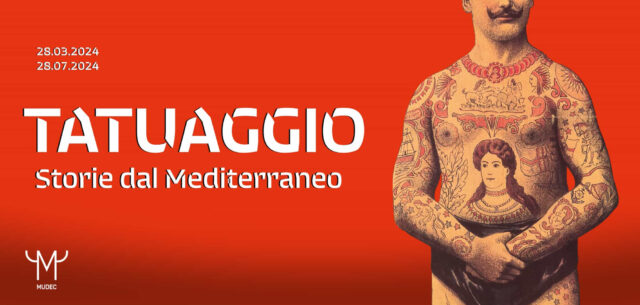
My last and most memorable image of Muammar Gaddafi is the night we spent in Cairo, at the Egyptian Museum!
It was never dull when I covered Libya’s flamboyant leader, Muammar Gaddafi. Over the course of 25 years as a photographer in the Middle East, I photographed Gaddafi on dozens of occasions. Sometimes we followed him to his tent in the middle of the desert to cover his meeting in with another head of state. Other times, we waited to see what spectacle of humans and beasts he was dragging along to an Arab Summit. It was not beyond him to show up with live camels to supply him with his favorite milk, or to bring along anonymous Bedouins that he picked up along the way. Then, there was his infamous entourage of female bodyguards who were irresistible trappings for the media.
On a non-descript evening in Cairo in March of 1999, the editor at the news agency that I worked for called me to say that I should head to the Egyptian Museum because there was a rumor that Gaddafi was planning a surprise visit.
At first, I was stunned because in all my years as a photo-journalist in the Middle East I had never met an Arab leader who was remotely interested in Egyptian antiquities. The only foreign dignitaries that ever showed any interest in Egypt’s glorious past were westerners. However, this was Gaddafi and anything was possible.
When I got to the museum, it was dark and seemed closed for business. I was about to make a U-turn and head back home, but I decided to hang out and chat with a few of my colleagues who had heard the same rumor. They too were skeptical but we decided to give the quixotic Gaddafi the benefit of the doubt. Our limit was about half an hour.
Just before the time was up, we heard the waling of sirens way off in the distance. These weren’t your typical police or ambulance sirens. This was clearly a convoy for a dignitary. As the sirens neared, the museum seemed to come alive. A dozen presidential guards popped out of nowhere and took position at the entrance. Then, the museum lights were switched on and the big wooden doors were flung opened. As the convoy approached, we were all ushered inside. Then, it was chaos. As Gaddafi and his entourage made their way in, photographers scrambled, pushed and shoved to get the best shot!

USA. New York City. September 11, 2001. View of Lower Manhattan from a Brooklyn Heights rooftop. Contact email:New York : photography@magnumphotos.comParis : magnum@magnumphotos.frLondon : magnum@magnumphotos.co.ukTokyo : tokyo@magnumphotos.co.jpContact phones:New York : +1 212 929 6000Paris: + 33 1 53 42 50 00London: + 44 20 7490 1771Tokyo: + 81 3 3219 0771Image URL:https://www.magnumphotos.com/Archive/C.aspx?VP3=ViewBox_VPage&IID=2K7O3RK3M5B&CT=Image&IT=ZoomImage01_VForm
This time, though, the photo-op was not that impressive as Gaddafi’s entourage was atypically low key. There were only a few people accompanying him, and they all looked “normal”. Maybe, the “bad boy” of the Middle East had been warned to behave on his visit to one of Egypt’s most cherished historical and touristic sites.
Among his companions on his “night at the museum” were his protocol chief Nuri al Mismari, his top female bodyguard “Fatima” and another female guard. For Gaddafi, this was modesty unprecedented. His Egyptian hosts were Information Minister Safwat el Sherif as well as a seasoned museum guide.
There was hardly any small talk between el Sherif and Gaddafi. As soon as the two entered the museum, the tour began in earnest. At first, el Sharif tried to rush Gaddafi through the museum, but the Libyan leader refused to be bullied. He took his time and pressed the guide with pertinent questions about all the different displays and relics that he saw. He was actually interested and this came as a shock to el Sharif who had obviously thought that this would be an easy and quick walk through. Then it became kind of a game between the two as Gaddafi did everything in his power to prolong the tour in order to annoy the impatient el Sherif. At one point the Egyptian minister ordered the guide to skip one of the rooms because the lights supposedly didn’t work.
It didn’t take long for the photographers to get their shots and leave. Before I knew it, I was the only one left behind. Initially I couldn’t decide whether to stay or go. My news sense told me that if this picture of Gaddafi was going to be used in any U.S. paper (by then most deadlines for European papers had past) I had to leave then. However, I also knew that Gaddafi’s visit to the Egyptian museum was not headline material. In the end, I decided to hang tight and see what interesting photo opportunities might pop up.
The tour continued with el Sharif still rushing through until the two reached the room where the King Tut treasures were kept. There, the entourage stayed for a long time admiring the king boy’s sarcophagus and all the other astounding relics that were buried with him.
After sending an image and filing away the negatives, I rarely thought of the incident again until recently. With the upheaval in Libya and other parts of the region, I dug into my photographic files and pulled out my Gaddafi pictures. Among this was this rare museum sighting.
It is anyone’s guess how history will judge Muammar Gaddafi. There is no doubt that, during his 40-plus-year reign, the Libyan suffered and spent much of their time isolated from the rest of the world. Why Gaddafi went to such length to suppress his people during the Arab uprisings’ is anyone’s guess. I can only image that he still saw himself as immortal and eager to rule forever.
Unfortunately the violent acts he committed against his own country will most likely be his legacy. If he would have just stepped aside and let a new generation take the helm, then I – like perhaps many- would have seen him as a true revolutionary. Unfortunately this did not happen and my most memorable image of Muammar Gaddafi remains that night, the one we spent at the Egyptian Museum!























